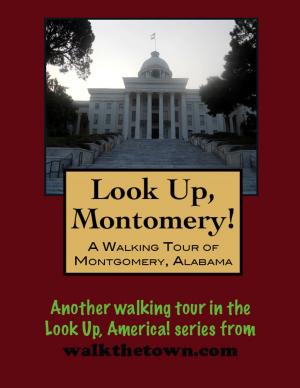Look Up, Phoenix, Arizona! A Walking Tour of Phoenix, Arizona
Nonfiction, Travel, Lodging & Restaurant Guides, History, Americas| Author: | Doug Gelbert | ISBN: | 9781301151868 |
| Publisher: | Doug Gelbert | Publication: | November 9, 2012 |
| Imprint: | Smashwords Edition | Language: | English |
| Author: | Doug Gelbert |
| ISBN: | 9781301151868 |
| Publisher: | Doug Gelbert |
| Publication: | November 9, 2012 |
| Imprint: | Smashwords Edition |
| Language: | English |
There is no better way to see America than on foot. And there is no better way to appreciate what you are looking at than with a walking tour. Whether you are preparing for a road trip or just out to look at your own town in a new way, a downloadable walking tour is ready to explore when you are.
Each walking tour describes historical and architectural landmarks and provides pictures to help out when those pesky street addresses are missing. Every tour also includes a quick primer on identifying architectural styles seen on American streets.
More than 2,000 years ago the Hokoham peoples created the blueprint for modern Phoenix, digging over 100 miles of irrigation canals in the Salt River Valley. The ancient ditches were long abandoned when a pioneer prospector named Jack Swilling saw the valley for the first time in 1867 and his dreams turned from mining to farming. He raised $10,000 in seed money from the mining camp at Wickenburg for the Swilling Irrigating Canal Company and got to work. The first crops were appearing in the irrigated fields within a year.
Pumpkins did especially well and the emerging community was first referred to an Pumpkinville. Phillip Darrell Duppa, an English native and self-proclaimed Lord, was a friend of Swilling's and an early canal digger with a more classical sensibility and, noting the community's debt to the Hokoham's canal system, he offered the name "Phoenix" for the mythical bird reborn from the ashes of destruction. The name stuck and the town was incorporated in 1881. In 1889 the Territorial Legislature left Prescott for Phoenix, then a village of about 2,000. Ten acres of land were provided one mile west of the town center and the Arizona government has been there ever since.
In 1902, President Theodore Roosevelt signed the National Reclamation Act, allowing dams to block western streams and Phoenicians, still reeling from a Salt River torrent in 1891 that swept into the town center a mile away, eagerly embraced the projects. By 1912 when Arizona became the 48th state and last of the contiguous states to be admitted to the Union the Salt River had disappeared from Phoenix and the streets were paved for the first time. The town of 11,000 inhabitants was connected to the main transcontinental railroad lines and functioning as the region's primary distribution center.
Today almost nothing remains of Territorial Phoenix before statehood. A city of 100,000 people in 1950 that would grow to over 1.3 million before century's end couldn't spend much time looking at the past. But there remain glimpses of 1920s Phoenix tucked into the modern streetscape and we will ferret them out, as well as important newer buildings, on our walking tour that will begin with a work from Arizona's most celebrated architectural team...
There is no better way to see America than on foot. And there is no better way to appreciate what you are looking at than with a walking tour. Whether you are preparing for a road trip or just out to look at your own town in a new way, a downloadable walking tour is ready to explore when you are.
Each walking tour describes historical and architectural landmarks and provides pictures to help out when those pesky street addresses are missing. Every tour also includes a quick primer on identifying architectural styles seen on American streets.
More than 2,000 years ago the Hokoham peoples created the blueprint for modern Phoenix, digging over 100 miles of irrigation canals in the Salt River Valley. The ancient ditches were long abandoned when a pioneer prospector named Jack Swilling saw the valley for the first time in 1867 and his dreams turned from mining to farming. He raised $10,000 in seed money from the mining camp at Wickenburg for the Swilling Irrigating Canal Company and got to work. The first crops were appearing in the irrigated fields within a year.
Pumpkins did especially well and the emerging community was first referred to an Pumpkinville. Phillip Darrell Duppa, an English native and self-proclaimed Lord, was a friend of Swilling's and an early canal digger with a more classical sensibility and, noting the community's debt to the Hokoham's canal system, he offered the name "Phoenix" for the mythical bird reborn from the ashes of destruction. The name stuck and the town was incorporated in 1881. In 1889 the Territorial Legislature left Prescott for Phoenix, then a village of about 2,000. Ten acres of land were provided one mile west of the town center and the Arizona government has been there ever since.
In 1902, President Theodore Roosevelt signed the National Reclamation Act, allowing dams to block western streams and Phoenicians, still reeling from a Salt River torrent in 1891 that swept into the town center a mile away, eagerly embraced the projects. By 1912 when Arizona became the 48th state and last of the contiguous states to be admitted to the Union the Salt River had disappeared from Phoenix and the streets were paved for the first time. The town of 11,000 inhabitants was connected to the main transcontinental railroad lines and functioning as the region's primary distribution center.
Today almost nothing remains of Territorial Phoenix before statehood. A city of 100,000 people in 1950 that would grow to over 1.3 million before century's end couldn't spend much time looking at the past. But there remain glimpses of 1920s Phoenix tucked into the modern streetscape and we will ferret them out, as well as important newer buildings, on our walking tour that will begin with a work from Arizona's most celebrated architectural team...















